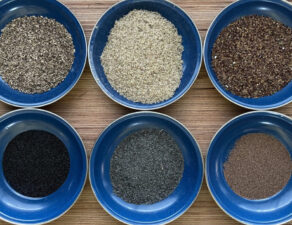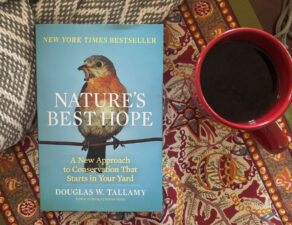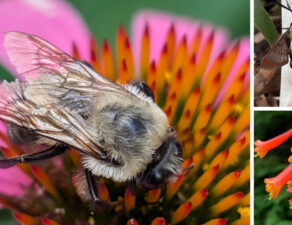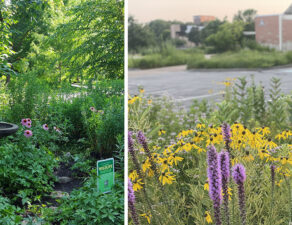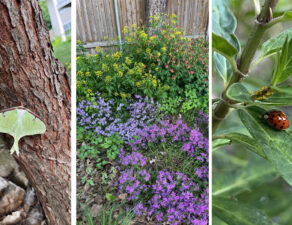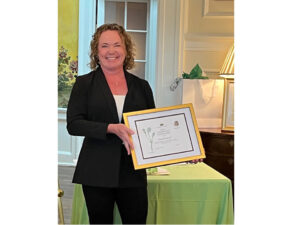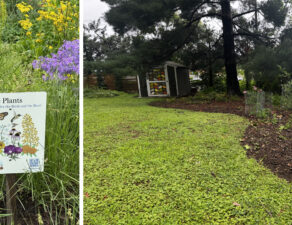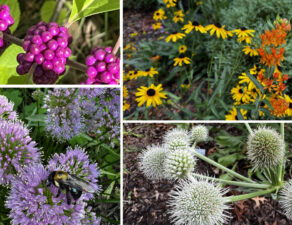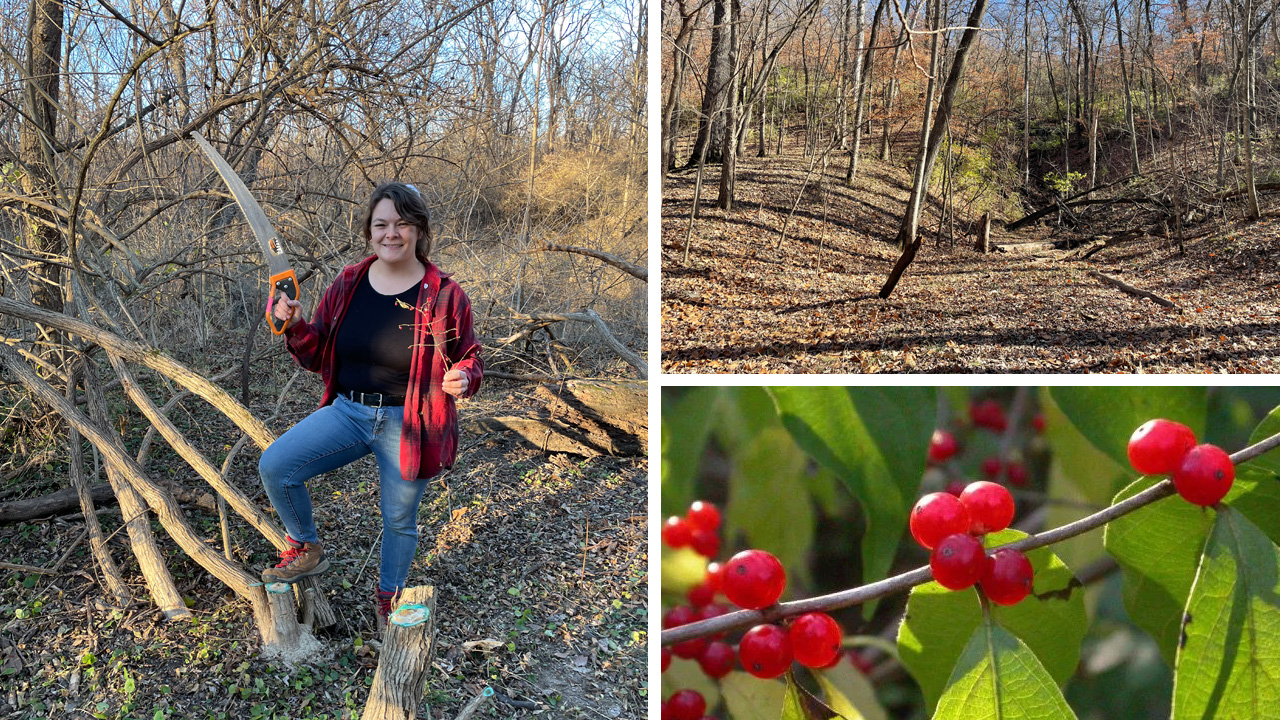
Photos and story by Cydney Ross, Outdoor Education Manager
By the end of fall trees have dropped their leaves while flowers and grasses take on their autumn hues. One plant that stands out among the rest is the non-native Shrub honeysuckle a.k.a Bush honeysuckle (Lonicera maackii). Long after our native perennials have begun their winter dormancy, this plant holds on to it leaves. This gives it an extended growing season and competitive edge for the following year. You may also notice the bright red fruits on this understory shrub. Though attractive to birds, these berries are not all they’re cut out to be. Thankfully these characteristics make it easy to identify and remove from the landscape this time of year. In my family, managing invasive Shrub honeysuckle has become a fall activity akin to picking pumpkins, but better, because it supports wildlife year-round.
If we draw a line across the globe, we’ll find Shrub honeysuckle calls east Asia home. In fact, it’s considered an endangered species in Japan.[1] This plant is important to its native ecosystem but wreaks havoc on ours. Shrub honeysuckle is one of the many considered a “non-native invasive species” in the United States. According to the Missouri Department of Conservation, this term is defined as an “aggressive, nonnative species whose presence causes or is likely to cause harm to the environment, economy, and/or human health. These species often grow, reproduce, and spread rapidly.”[2] This is not to be confused with aggressive native or demure non-native species. It’s worth noting that each plant has its place, and we all have our gardening goals, but ecosystems are intricate and delicate, having evolved in harmony over thousands of years. As we’re learning, introducing non-native species to established native ecosystems can have unforeseen consequences.
Shrub honeysuckle was intentionally brought to America as a means for erosion control and ornamental landscaping at the turn of the century. It has done so well in our climate that it escaped gardens and continues to swallow up everything from natural areas to backyards. This wouldn’t be an issue except this plant has no biological pressures to keep it in check. All the insects which depend on it for food are in its place of origin, not here. Out of place, this plant no longer fits into a balanced natural community. Instead, it has more advantages in its newfound territory. In addition to being the first to leaf out and last to lose leaves, its fruit contains allelopathic chemicals that prevent neighboring plants from growing. Not to mention the fruits are delicious to birds. Their method of aerial seed dispersal is superior, only exacerbating the spread of invasive species far and wide. Although the berries are a tempting snack for birds, are they good for them?
Birds do not discriminate on whether berries are native or not, especially with winter around the corner. Although abundant, Shrub honeysuckle fruit doesn’t provide the nutritious meals our songbirds need to survive harsh Midwestern winters. At this time of year our birds need hearty meals full of protein and healthy fat. Instead, this non-native invasive is loaded with carbohydrates which break down much like fast-food[3]. At the Discovery Center in Kansas City, I’ve observed songbirds enjoying the fruit from healthier native options like Viburnum (Viburnum species), Spicebush (Lindera benzoin), and American beautyberry (Callicarpa americana). In preparation to adding beautiful and beneficial plants to your landscape, late fall is a great time to remove non-native invasive species.
Half-way between October and November are the sweet spots for invasive Shrub honeysuckle removal in the Midwest. As mentioned previously, this plant is the last to lose leaves making it easy to identify. The cooler temps are also ideal for the labor involved. As a Missouri Master Naturalist I dedicate a lot of my volunteer hours to invasive removal. What I’ve learned from experts like Linda Lehrbaum of KC Wildlands is that it’s important to assess the site you’re working on before starting the process. In woodlands with dormant spring ephemerals, be careful not to pull out desirable plants along with the invasive ones. Certain native trees like Pawpaw (Asimina triloba) are especially sensitive to nearby chemicals that target roots, like Tordon.
There are many ways to remove Shrub honeysuckle and lots of opinions on best practices. Just know if you simply cut it back, it will return tenfold like a hydra. Depending on the situation my preferred methods are hand pull, cut and stump treat with appropriate herbicide, and root docking. All three methods will be taught during our next MDC Wednesday Workday on October 25th at the Discovery Center. Learn how easy (and fun!) it is to remove invasive species in your own backyard.
Although we will always have to manage invasive species in the landscape, it does get easier for homeowners once the mature plants are removed. Plus think of all that extra space you can fill with native plants next spring. Keep fighting the good fight and know you’re doing it for the birds.
[1] “Red List of Threatened Plants of Japan”. Ministry of the Environment (Excel spreadsheet). Government of Japan.
[2] “Invasive and Nuisance Species”. Missouri Department of Conservation.
[3] “Invasive Plants are NOT for the birds”. Johnny Randall. New Hope Audubon.
